Photos of 'Hybridized' Animal Sacrifices from Ancient England
An Iron Age settlement in southern England is home to curious, hybridized animal burials. Archaeologists uncovered a sheep buried with two extra legs, a horse skull buried with cow body parts and a cow skull with a horse jaw, among others. It's likely these ancient burials were animal sacrifices meant to please the gods, the researchers said. (Photo credit: copyright Bournemouth University.) [Read the full story on the hybrid animal burials]
Human sacrifice?
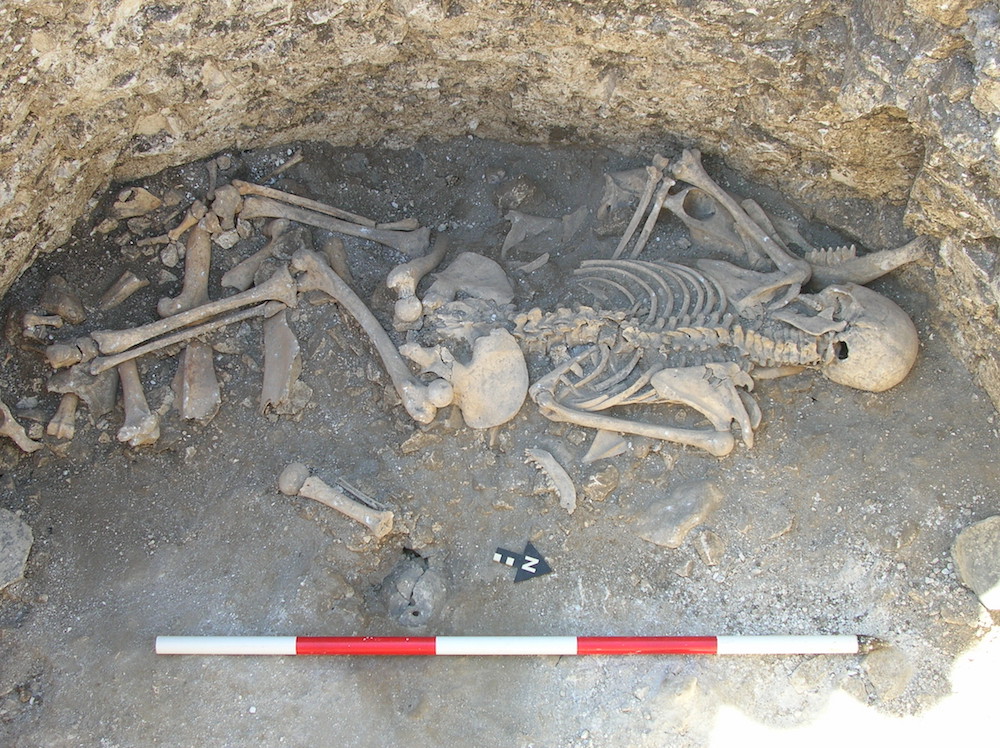
Archaeologists found the remains of an adult female who lived during the Iron Age in England, before Rome invaded in the middle of the first century A.D. The researchers found the individual lying face down at the bottom of a pit on top of horse and cow bones. It's possible that the ancient inhabitants of the settlement sacrificed the woman, but it's unclear why.
Extra legs
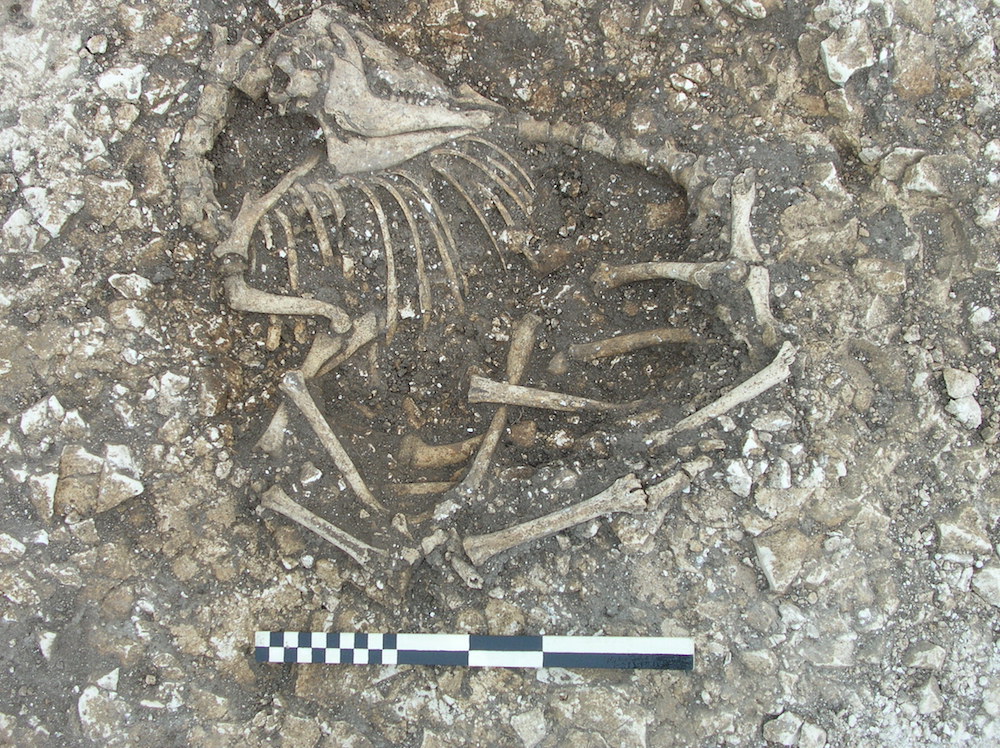
The skeleton of a sheep with two added legs. The extra legs came from another sheep, the researchers said.
Cow-horse
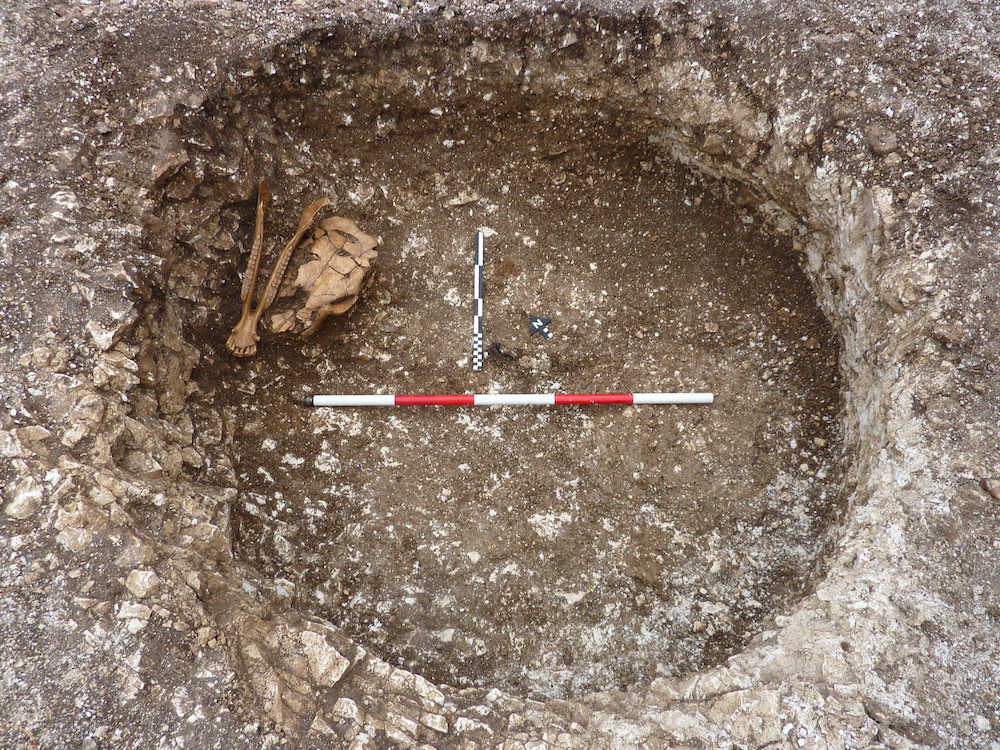
This pit contains a cow skull with a horse jaw.
Sign up for the Live Science daily newsletter now
Get the world’s most fascinating discoveries delivered straight to your inbox.
"The remains have been reassembled in a semi-fleshed state in the ground," said Miles Russell, a senior lecturer in prehistoric and Roman archaeology at Bournemouth University, and co-director of the Durotriges Big Dig. "What this meant precisely to the tribes we don't know, as nothing, sadly, was written down from the period and we have no record of the names or nature of the gods being invoked."
Horse-cow
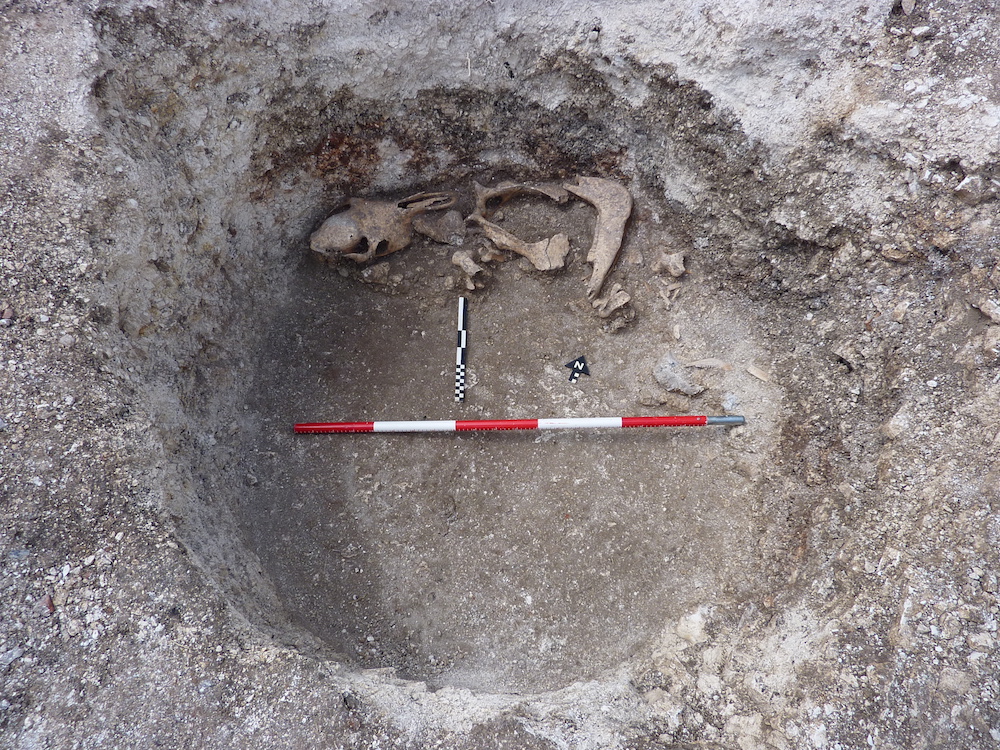
This horse skull is paired with cow body parts.
Baa-baa black sheep
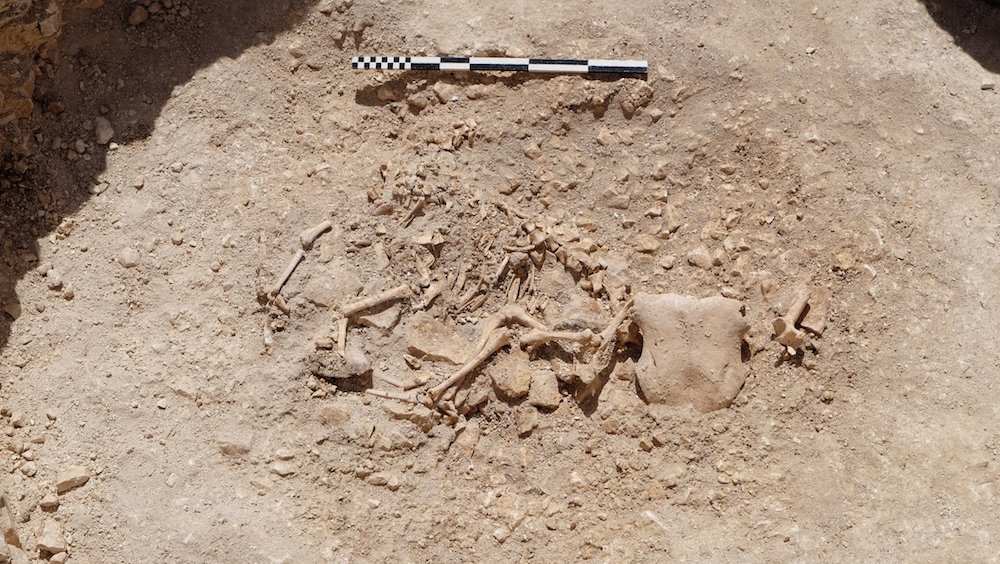
A sheep with a horse skull.
Oink
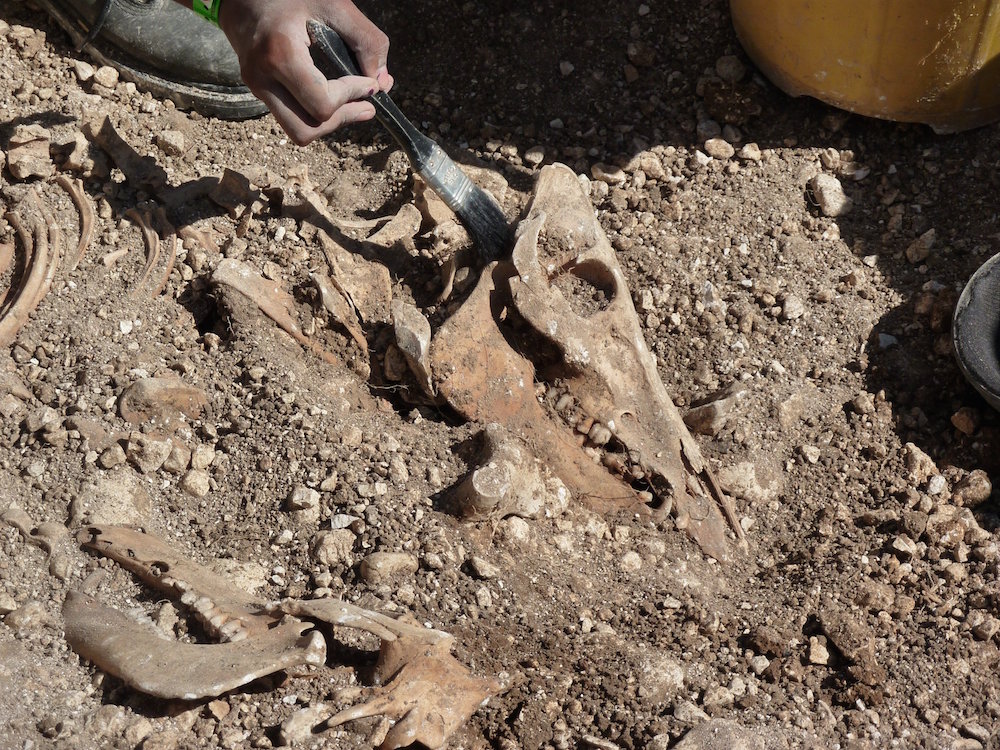
An Iron Age pit containing a pig burial.
Three little pigs
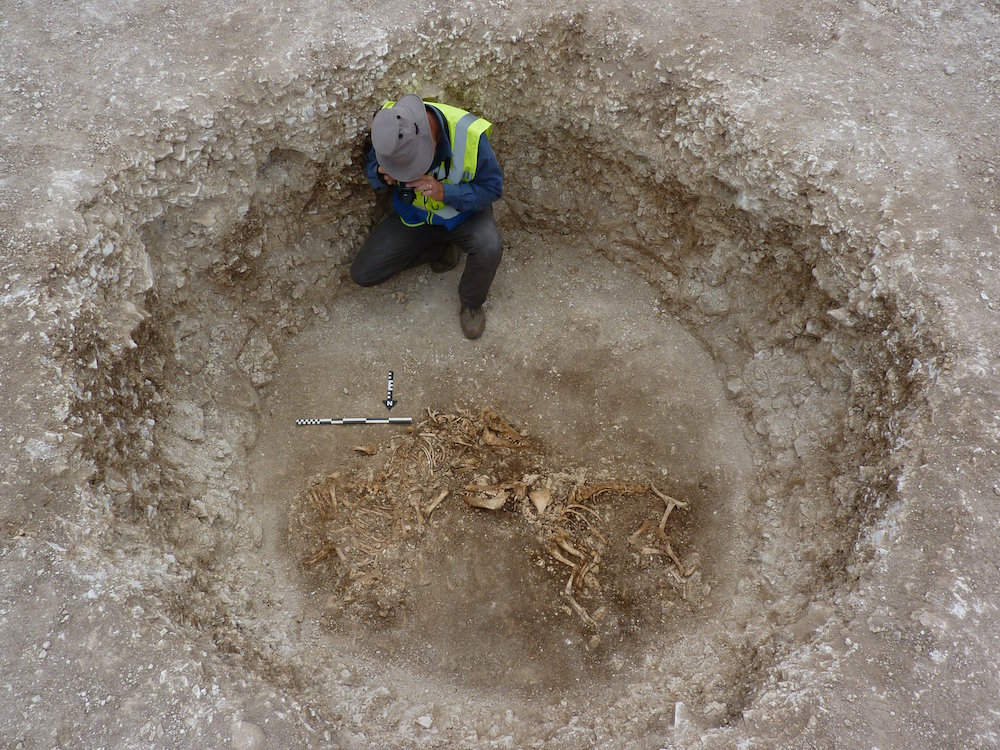
A deep pit holding three sacrificed pigs.
Roundhouse real estate
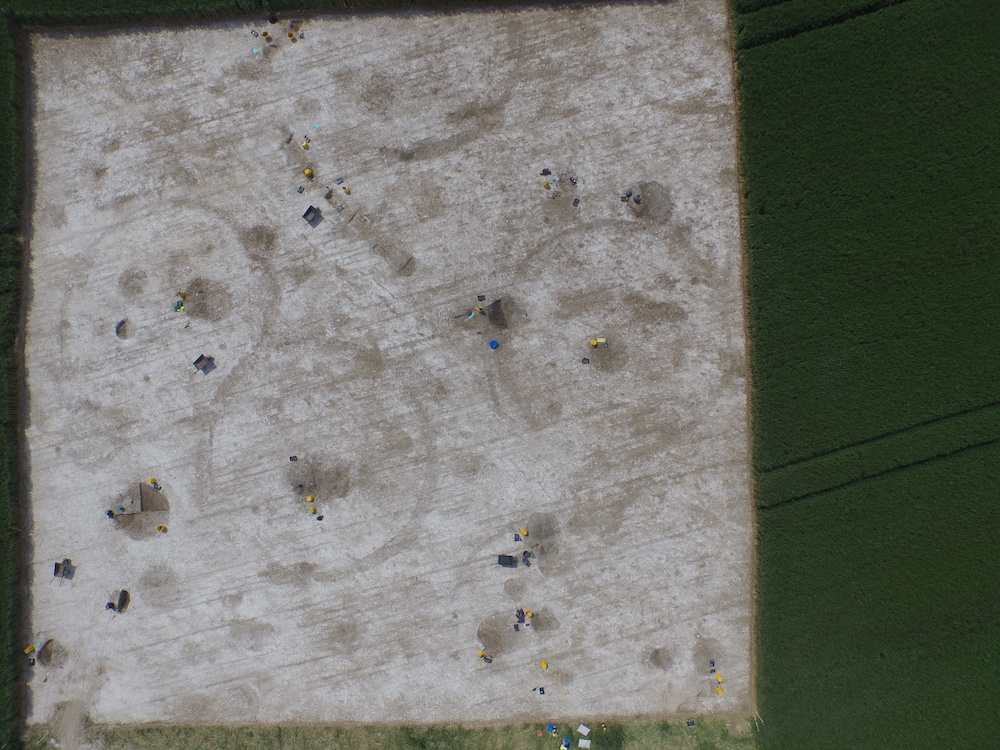
Roundhouses under excavation, as seen from an aerial drone camera.
Houses and pits
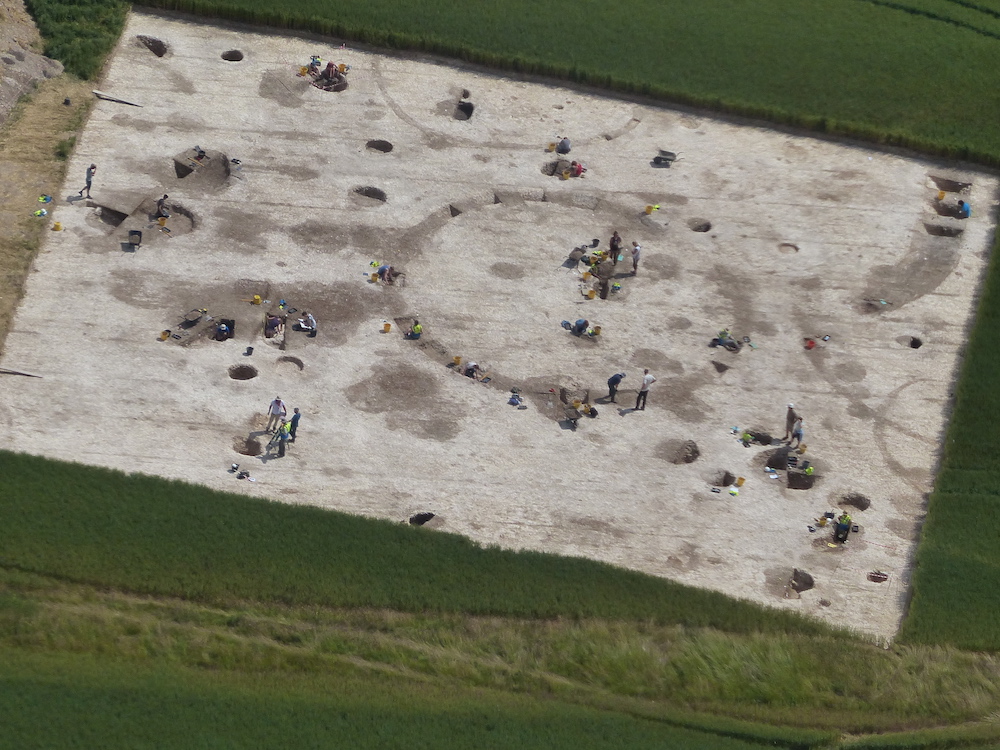
An aerial shot showing an Iron Age roundhouse, ancillary houses and their associated pits, which contain the animal remains.
Excavation in progress
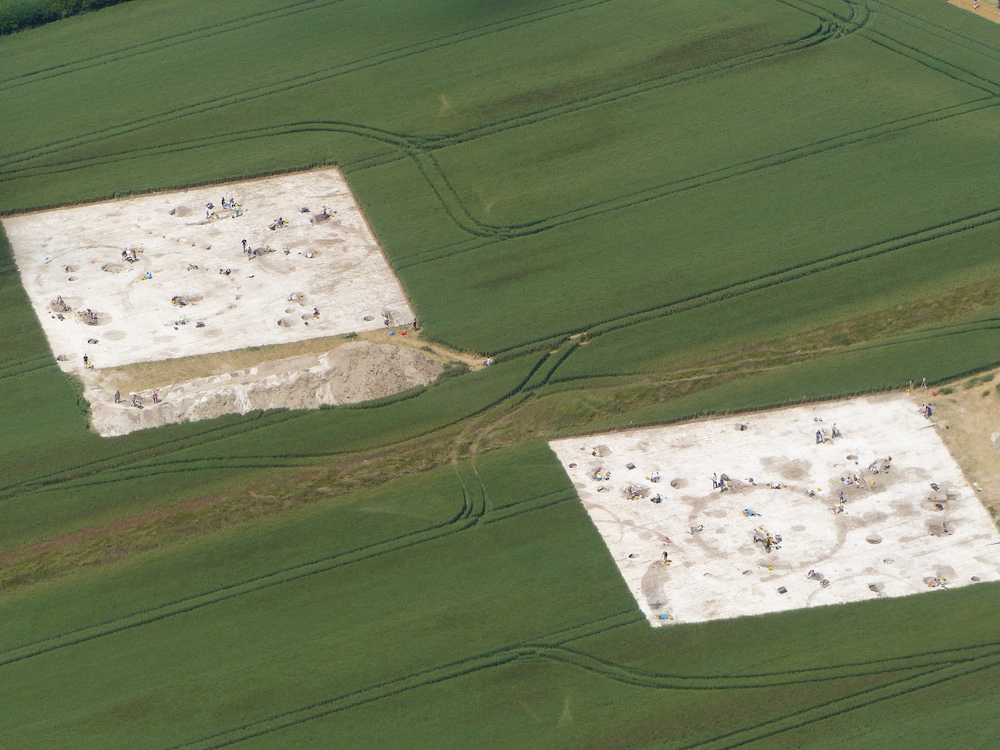
The two main trenches archaeologists dug to excavate the Iron Age settlement that existed in England before the Roman invasion.
Follow Laura Geggel on Twitter @LauraGeggel. Follow Live Science @livescience, Facebook & Google+.

Laura is the archaeology and Life's Little Mysteries editor at Live Science. She also reports on general science, including paleontology. Her work has appeared in The New York Times, Scholastic, Popular Science and Spectrum, a site on autism research. She has won multiple awards from the Society of Professional Journalists and the Washington Newspaper Publishers Association for her reporting at a weekly newspaper near Seattle. Laura holds a bachelor's degree in English literature and psychology from Washington University in St. Louis and a master's degree in science writing from NYU.









